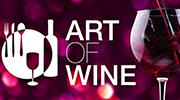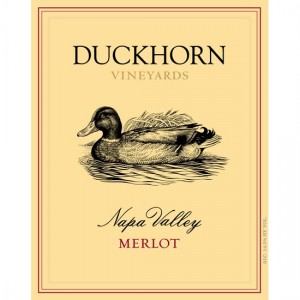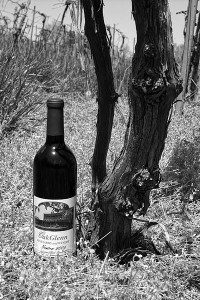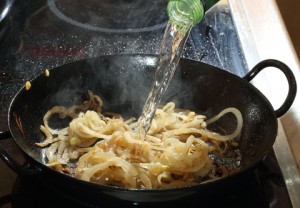by Lorri | May 21, 2014 | UnCorked
 The Art of Wine is one of my favorite wine events of the year. This Northwest Arkansas event will draw guests from around the country and supports the Walton Arts Center’s award-winning arts, learning and education programs, all dear to my heart.
The Art of Wine is one of my favorite wine events of the year. This Northwest Arkansas event will draw guests from around the country and supports the Walton Arts Center’s award-winning arts, learning and education programs, all dear to my heart.
What makes the three-day event for all wine lovers — from the experts and oenophiles to neophytes — unique are the multiple opportunities to enjoy and indulge in hundreds of wines. The Winemakers Dinner on June 12 kicks off with the extraordinary ambience of dining on the Baum Walker Hall stage. This year’s featured winemaker is Scott Kozel who will guide guests in demystifying the chemistry of winemaking. The dinner will include expert wine and food pairing with a five-course meal prepared by Ella’s restaurant.
June 13 at the Art of Wine offers a selection of more than 400 wines from around the world along with menu sampling from the area’s best restaurants.
The Premier Tasting on June 14 is the main event, with some of the world’s most prestigious wines.
For more information, contact the Walton Arts Center box office at (479) 443-5600 or visit WaltonArtsCenter.org.
The following is a small sampling of some of the wines featured at this year’s event.
THE VALUES
- 2013 Presqu’ile Rose of Pinot Noir, California (about $17 retail)
- 2012 J. Wilkes Pinot Blanc, California (about $15 retail)
- 2012 Stepping Stone North Coast Red Rocks, California (about $18 retail)
- 2012 Alberto Furque Malbec, Argentina (about $15 retail)
THE SPLURGES
- 2012 Nickel and Nickel Sullenger Vineyard Cabernet Sauvignon, California (about $100 retail)
- 2010 Neely Picnic Block Pinot Noir, California (about $55 retail)
by Lorri | May 14, 2014 | UnCorked
 Anthony Bell, owner of Bell Winery, recently visited Northwest Arkansas. Bell has been a frequent visitor to Arkansas over the past 10 years and is more often greeted with a hug than a handshake.
Anthony Bell, owner of Bell Winery, recently visited Northwest Arkansas. Bell has been a frequent visitor to Arkansas over the past 10 years and is more often greeted with a hug than a handshake.
He has also, with open arms, shared his winery with visitors to Napa Valley and California wine country. Because of his humble, soft-spoken demeanor you may not be aware of the influence and accomplishments he has had in the American wine industry.
Bell started making a name for himself in the wine world in 1979 when he joined Beaulieu Vineyards as assistant winemaker and viticulturist. He was responsible for Beaulieu’s exceptional Georges de Latour Private Reserve cabernet for 15 vintages, from 1979 to 1994. In those days the Napa Valley culture was not like it is today, with boutique wineries filling the valley. At the time, the industry was dominated by large wineries.
While at Beaulieu Vineyard, Bell was involved in projects and issues that could be described as “total game changers” for the California wine industry, including the creation and designation of the Carneros American Viticultural Area in Napa Valley; the Rutherford, Oakville and Yountville appellations, or designations, as distinct wine areas; work to stop the spread of fan leaf virus disease; cabernet clonal research; and estate wine bottling regulations. All of these ultimately led to the development of Bell Wine Cellars.
Possibly his most well known innovation is his clone research, resulting in today’s well-known Bell Wine Cellars Clone 6. Bell began designing the first cabernet clonal evolutions studies in the 1980s and eventually reintroduced the Bordeaux Clone 6 cabernet sauvignon to commercial production after nearly 100 years of neglect. The neglected clone was found in an abandoned University of California vineyard. Napa Valley’s first single vineyard, single clone Cabernet Sauvignon Clone 6 was produced in 1991.
In every wine Anthony Bell produces his focus continues to follow the dedication of each wine’s creation by “its sense of place”– terroir.
THE VALUE
- 2012 Big Guy Red, California (about $17 retail)
THE SPLURGE
- 2009 Bell Wine Cellars Clone 6, California (about $109 retail)
by Lorri | May 7, 2014 | UnCorked
 Merlot is often overshadowed by its more distinguished blending partner, cabernet sauvignon. For centuries, merlot has been the preferred blending partner for cabernet around the world. Its role is quite simple: to take away the hard, tannic edge of cabernet sauvignon with its soft, gentle roundness. A famous wine critic once said that “behind almost all great cabernets there will be some merlot lurking somewhere inside the bottle, sweet-talking the tannic cabernet into civility.”
Merlot is often overshadowed by its more distinguished blending partner, cabernet sauvignon. For centuries, merlot has been the preferred blending partner for cabernet around the world. Its role is quite simple: to take away the hard, tannic edge of cabernet sauvignon with its soft, gentle roundness. A famous wine critic once said that “behind almost all great cabernets there will be some merlot lurking somewhere inside the bottle, sweet-talking the tannic cabernet into civility.”
As remarkable as merlot may be in a blend, this grape also has the strength to stand on its own.
The French, for centuries, have honored merlot — identified not by name, but by location — with wine labels only mentioning the prestigious chateaux. Those who have studied the great Bordeaux region are privy to the exact locations where merlot dominates, such as the luscious wines of Pomerol, St. Emilion and Margaux.
Americans have also reverently respected this grape. Our growing style offers a soft, fruity taste fitting into the American wine palate. It has always offered a connection for those looking for a less aggressive, easy-to-drink wine without the cellar wait and mouth-stripping tannin cabernet can sometimes offer.
THE VALUES
- 2012 Montes Alpha Merlot, Chile (about $12 retail)
- 2012 Columbia Crest Merlot, California (about $12 retail)
- 2012 Bogle Vineyards Merlot, California (about $10 retail)
- 2012 Bonterra Merlot, California (about $15 retail)
THE SPLURGES
- 2011 Duckhorn Napa Merlot, California (about $67 retail)
- 2010 Reynolds Family Winery Stags Leap Merlot, California (about $46 retail)
- 2010 BV Napa Valley Merlot, California (about $29 retail)
by Lorri | Apr 30, 2014 | UnCorked
 I don’t remember my first introduction to chardonnay, pinot noir and cabernet sauvignon but I distinctly remember the moment I first met the grape named Norton.
I don’t remember my first introduction to chardonnay, pinot noir and cabernet sauvignon but I distinctly remember the moment I first met the grape named Norton.
It was while studying at The Wine and Spirits Education Trust of London more than 12 years ago. It was a somewhat monotonous day as our instructor was barraging us with an overload of information about grapes, origins, yields and other facts. During my note-taking frenzy, I heard her say, “The variety of American vine species making a premium-quality wine in the U.S. is Norton, a grape variety identical to Cynthiana.” She went on to say: “You can find it growing in Arkansas, Missouri and Virginia.” Obviously, sitting thousands of miles and an ocean away, the mere mention of my home state and neighbor Missouri got this Arkansan’s attention.
Missouri’s St. James Winery is not only producing this grape, but is excelling in mastering it, and has received numerous accolades. Italian immigrants brought the rich wine tradition to the area. Before prohibition Missouri was the second largest wine-producing state in the country, but many of the state’s wineries were destroyed during the no-alcohol years of the 1920s.
In the 1970s, Jim and Patricia Hofherr laid the beginnings of St. James family’s vineyards. Today, their son Peter is at the helm. St. James’ logo depicts a one-room schoolhouse next to the vineyards and is the winery’s way of honoring the families who brought the tradition of wine to the area.
Even though Norton and Cynthiana show up on many wine labels they may still remain unknown to many in the wine-drinking world. And even though the variety may not have a taste profile as well known as others lining retail shelves, when produced with quality and care this variety showcases an exceptionally unique wine.
Who knows? When the world fatigues of the similar styles and familiar tastes found in most wines, wine lovers may look to Missouri and Arkansas for the next grape craze.
THE VALUE
- 2011 St. James Winery Cynthiana, Missouri (about $11 retail)
THE SPLURGE
- 2011 St. James Winery Norton Reserve, Missouri (about $25 retail)
by Lorri | Apr 23, 2014 | UnCorked
 There are countless rules surrounding wine, but one of my least favorites is the old-fashioned guidance, “Always cook with the same wine you will be drinking.” I remember the first time the rule struck me as one I would not be following in my kitchen. I was making beef stew and the recipe instructed me to add two cups of red wine. It just happened the wine I was serving and had opened for dinner was a beautifully aged Bordeaux. I could not convince myself to pour half of my bottle into the pot. Thus beginning my exploration of wine being used as a cooking ingredient.
There are countless rules surrounding wine, but one of my least favorites is the old-fashioned guidance, “Always cook with the same wine you will be drinking.” I remember the first time the rule struck me as one I would not be following in my kitchen. I was making beef stew and the recipe instructed me to add two cups of red wine. It just happened the wine I was serving and had opened for dinner was a beautifully aged Bordeaux. I could not convince myself to pour half of my bottle into the pot. Thus beginning my exploration of wine being used as a cooking ingredient.
Many cooks have experimented using different wines (ranging from the least expensive to super premium) in the same recipe. Generally the results were similar, but with a few notable exceptions. Wines in lowest price range tend to be either slightly sweet or bland and generally imparted these characteristics to the final dish. Premium wines tend to be very flavorful but lose their nuance as they cook. In general the best wines to cook with fall in the middle, $8 to $12 wines with simple flavors and aromas.
Be cautious of using grocery store “cooking wine,” as it tends to have additional additives and excessive salt and likely will change the taste of a recipe calling for red or white wine.
When faced with the typical vague instruction “2 cups dry white wine” or “1 cup red wine,” opt for a dry style unless the recipe is specific in listing a sweet wine as an ingredient. However, if a wine label reads “fruity,” this does not mean sweet. A safe white wine is chardonnay, and for reds, cabernet sauvignon, merlot and pinot noir are good options.
A wine that is often overlooked is dry vermouth. Most famous for its role in martinis, this dry white wine has been steeped with various spices, herbs and seasonings. It’s known as the chef’s secret because it adds interesting lightly spicy hints to sauces.
The longer the dish is cooking, the more of the wine’s character is lost. For long-simmering dishes, the specific wine is less important than one for a quick saute. Also consider the color. White wine is generally used in most stocks and sauces because the red wine would change the color of the food.
If you are concerned about alcohol, it is important to note that alcohol boils at about 178 degrees, so if you are braising, boiling, or cooking the food for a prolonged period most of the alcohol will evaporate off. In briefly cooked dishes, as much as 85 percent of the alcohol may remain.
My advice is to follow the guidelines, but save your best bottle of wine for your glass and not the cooking pan.
by Lorri | Apr 16, 2014 | UnCorked
 There are many special foods and traditions associated with the Easter celebration.
There are many special foods and traditions associated with the Easter celebration.
The beautifully decorated egg is perhaps the most recognizable. The egg is a symbol of rejuvenation and rebirth and in some Christian traditions, eggs were not to be eaten during the Lenten season. At the end of Lent, hard cooked eggs were brought to the table in much anticipated celebration. They were often painted red to symbolize the Easter joy.
Pairing wine with egg dishes isn’t as difficult as some experts would have us believe. It isn’t the egg’s flavor per se, but the runny yolk that supposedly destroys the texture and flavor of wine. White wines are good matches for green salads topped with hard-cooked egg or tuna salad studded with diced hard cooked eggs.
THE VALUE
- 2013 Domaine Bousquet Torrontes/Chardonnay, Argentina (about $13 retail)
THE SPLURGE
- 2013 Michael David Winery Sauvignon Blanc, California (about $17 retail)
There are many explanations why meats such as ham and lamb are often the centerpieces of our Easter menus. Some food historians say meats are symbolic of luck and abundance, and others suggest it is simple practicality of timing. Ham’s arrival at the Easter table is a good example. Hogs were slaughtered in the fall, then cured and smoked. The process took five to six months, with hams being ready just in time for Easter.
Ham can be an easy wine pairing when salt is the main flavoring. Wines love pairing with salt and can make almost any food match. But when sweet glazes are added, the match up gets trickier.
For pairing with sweet-glazed ham, consider wines without overpowering tannins or moderately acidic whites.
THE VALUE
- 2012 Echelon PinotNoir, California (about $15 retail)
THE SPLURGE
- 2011 Presqu’ile Pinot Noir, California (about $49 retail)
Lamb’s popularity is likely more symbolic of the holiday, and is in many places the main dish of the Easter Sunday meal.
A simple preparation offers a mild flavor that easily pairs with light-bodied red wines but adding heavy spices or sauces creates a rich, robust and earthy taste.
THE VALUE
- 2009 Chapillon Cuvee Paul Grenache, Spain (about $15 retail)
THE SPLURGE
- 2013 Stepping Stone Cabernet Franc, California (about $48 retail)
 The Art of Wine is one of my favorite wine events of the year. This Northwest Arkansas event will draw guests from around the country and supports the Walton Arts Center’s award-winning arts, learning and education programs, all dear to my heart.
The Art of Wine is one of my favorite wine events of the year. This Northwest Arkansas event will draw guests from around the country and supports the Walton Arts Center’s award-winning arts, learning and education programs, all dear to my heart.



